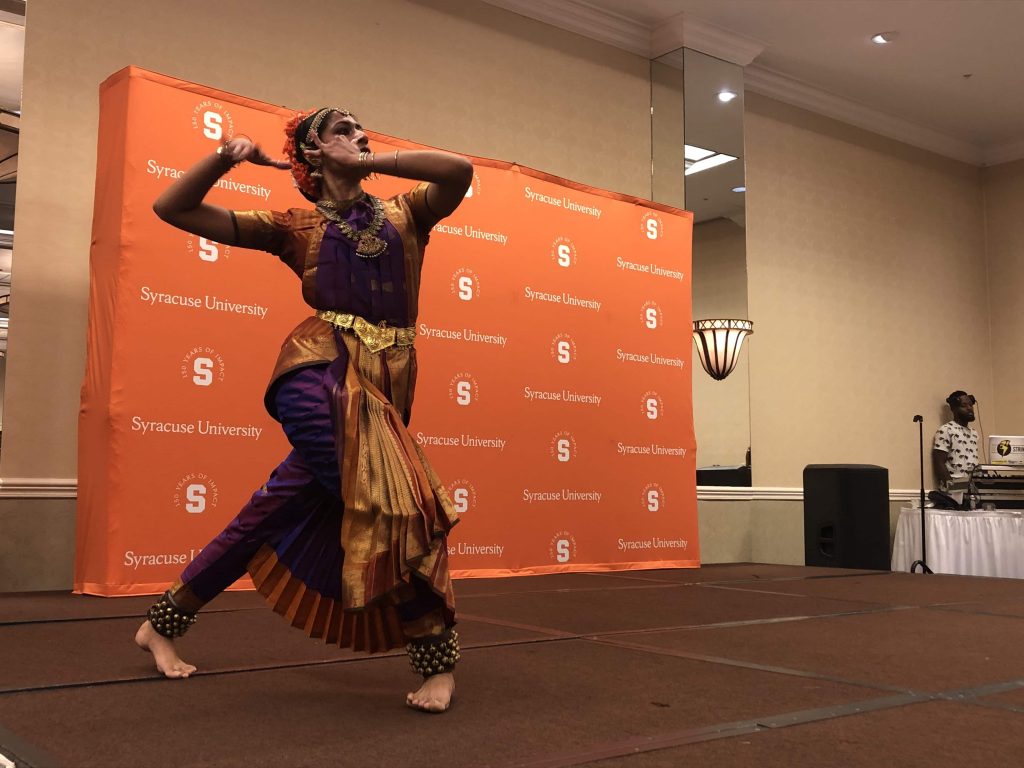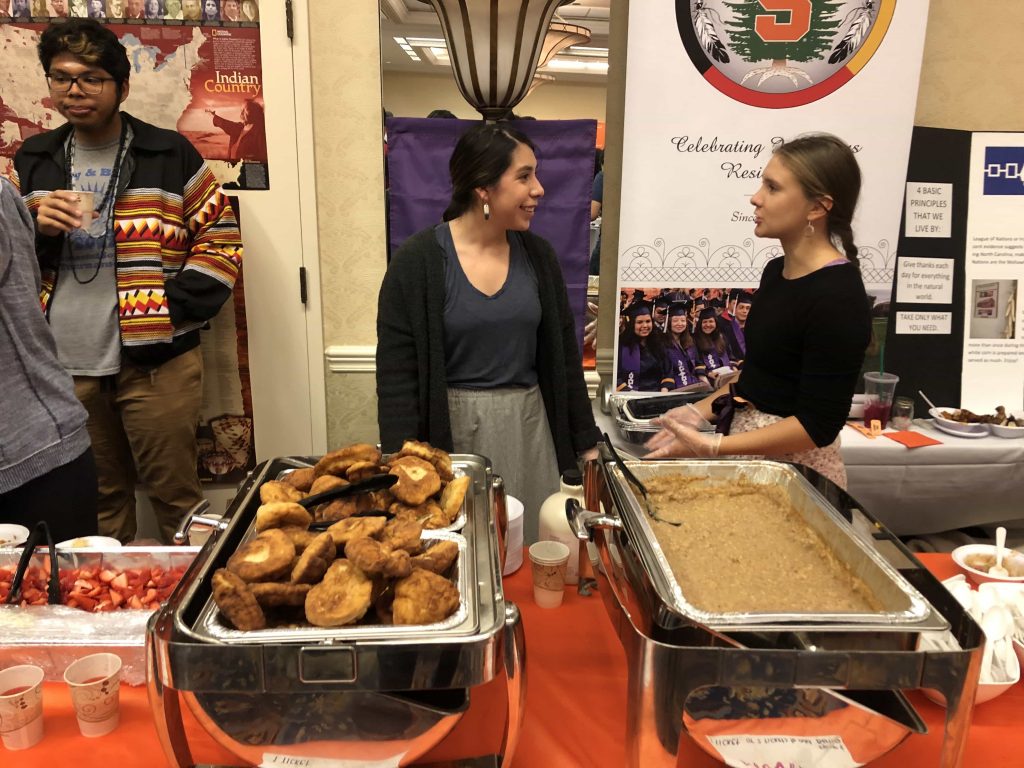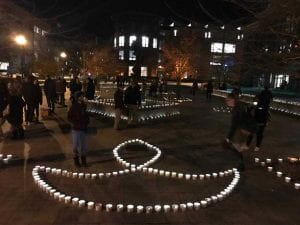International Festival promotes global engagement through music, dance and food
SU's first-ever International Festival promotes global engagement

Hundreds of students and Syracuse University community members gathered in the ballroom of the Sheraton Syracuse University Hotel & Conference Center over music, food and dance on Sunday evening for the university’s first-ever International Festival. The vibrant, colorful ballroom was home to nine booths from 4 p.m. to 8 p.m., each representing a different nation, region or culture.
China, France, India, Brazil, Haiti and Pakistan were some of the cultures represented at the booths. Many international students felt that the event provided a space for them to be connected to their roots while in central New York.
Director Juan Tavares of the Slutzker Center for International Services brought the idea to Syracuse when he came here in July from Western Michigan University. For the last six weeks, students have been preparing menus, creating displays, rehearsing performances and cooking for the festival, he said.
International student Eduarda Carvalho said the dishes brought her back to her childhood in Brazil.
“All of these were my childhood foods,” said Carvalho. “It’s just amazing to get to experience this again here because we don’t have the access as much as we have at home.”
For Rhiannon Abrams, who is Haudenosaunee and a member of the Indigenous Student Association, the event was also a way to remember tradition and history. The dishes at the Indigenous Students Association booth gave indigenous student leaders an opportunity to educate other students about the relationship that indigenous people have with those who colonized the United States. The booth served fry bread, which Abrams said was a means of survival for indigenous people in the past when U.S. officials cut down on their supplies.
“They only left us with flour so we had to learn how to make something out of it. So we came up with fry bread,” she said. “It’s become a part of our culture now because it was a means of our survival. So it’s kind of a reminder of our resilience. I think that’s really important.”
The booth also served corn mush, which Abrams described as a staple Haudenosaunee dish made from corn and water. Depending on the ceremony, sometimes it is dressed with strawberries, blueberries or maple syrup.

Syracuse student Karisma Dev performs Bharatanatyam, a South Indian dance.

Rhiannon Abrams shares Haudenosaunee history through food and stories at the International Festival.
The event also showcased music, dance, and fashion. Karisma Dev, an international student from India, performed Bharatanatyam, which is a classical dance from South India.
“Traditionally it was presented as a temple dance and now it is a very beautiful form of people connecting in our culture,” Dev said.
Anna Sebree, a member of the French Club at Syracuse, says the turnout at the International Festival took her by surprise.
“There are a lot more people and people went all out,” she said. “It has exceeded my expectations.”
With such a high turnout, Tavares plans on making the festival an annual tradition at SU.
“The goal is to get people introduced to what we can do when all the cultures and regions come together,” Tavares said. “It’s all about global engagement and introducing the American students at this university to so many cultures available right here on this campus.”







